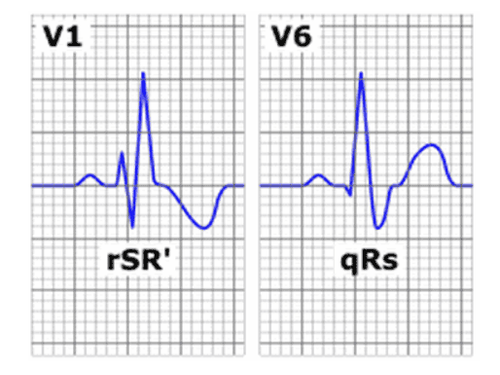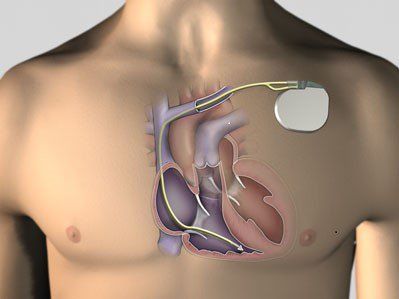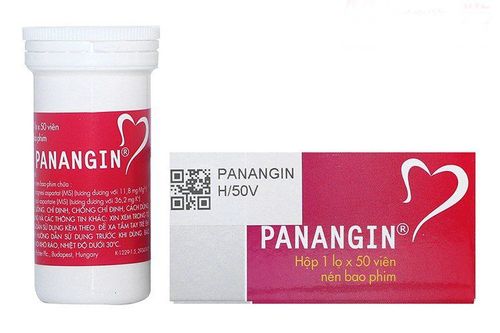This article is reviewed by Dr. Đoàn Dư Đạt, Specialist Level II, Senior Doctor of General Internal Medicine, Department of General Medicine and Examination, Vinmec Ha Long International Hospital.
Right bundle branch block is a type of electrical conduction disorder in the heart that is generally considered less severe than left bundle branch block. It is categorized under intraventricular conduction disorders but may also indicate the presence of new cardiovascular events. Therefore, screening for acute conditions and treatment is crucial.
1. What is Right Bundle Branch Block?
A bundle branch block refers to a conduction disturbance in one branch of the His bundle, also known as an intraventricular conduction disorder. It includes both left bundle branch block (LBBB) and right bundle branch block (RBBB).
RBBB occurs when there is a conduction disturbance in the right branch of the His bundle, possibly due to damage or interruption. As a result, impulses from the atria first depolarize the left branch and then propagate to the blocked right branch. This condition is evident on an electrocardiogram (ECG).
There are two types of RBBB:
• Incomplete RBBB
• Complete RBBB
On an ECG, RBBB is identified in leads V1 and V2 by a widened QRS complex (≥ 0.1s), notching with delayed intraventricular conduction, and a rightward axis deviation accompanied by secondary changes in the ST-T segment that are opposite in direction to the QRS complex.
Right bundle branch block is divided into two types: complete right bundle branch block and incomplete right bundle branch block. Incomplete RBBB is a milder form of complete RBBB.
• Waveform characteristics in RBBB:

• The QRS complex has an rSR' pattern with a widened R', which may appear notched or slurred, or a qRs pattern. Occasionally, it may exhibit a QR pattern with a widened R in leads V1 and V2.
• The ST-T segment is always in the opposite direction of the final widened or notched wave in the QRS complex.
2. Causes of Right Bundle Branch Block
• RBBB may occur in healthy individuals and is considered benign, requiring no treatment;
• Individuals with cardiovascular diseases such as: individuals with hypertension, coronary artery disease, myocarditis, atrial septal defect, ventricular septal defect, valvular heart disease due to damage and dilation of the right ventricle causing right bundle branch block;
• Pulmonary conditions that lead to RBBB, such as: Chronic obstructive pulmonary disease (COPD), pulmonary embolism, right-sided heart failure;
• Cardiac catheterization procedures may cause RBBB;
• Sinus node dysfunction due to aging and severe hyperkalemia may also cause RBBB.
3. Symptoms of Right Bundle Branch
Symptoms of RBBB often manifest in individuals with coexisting cardiovascular or respiratory conditions. These symptoms include:
• Palpitations;
• Dizziness;
• Chest pain or heaviness;
• Shortness of breath, especially during exercise.

In cases of complete RBBB, the heart rate may slow to 40 beats per minute, reducing the heart's pumping efficiency and leading to oxygen deprivation. This is particularly concerning for individuals with underlying heart or lung diseases or sinus node dysfunction. Oxygen deprivation in the brain may cause fatigue, fainting, and even temporary cardiac arrest.
Incomplete RBBB typically has no clinical symptoms and is considered benign.
4. Treatment of Right Bundle Branch Block (RBBB)
The approach to treatment depends on the associated conditions and clinical symptoms. Treatment methods include:
• For young, healthy individuals without cardiovascular or pulmonary diseases, RBBB is not considered a disease. It rarely affects the heart's pumping function and thus does not require immediate treatment. However, patients should undergo periodic check-ups every 1–2 years and perform ECGs to monitor the progression of the condition if RBBB is detected.
• For individuals with cardiovascular or pulmonary diseases (such as chronic obstructive pulmonary disease -
), incomplete RBBB can progress to more severe forms (complete RBBB). In such cases, treatment should focus on managing the underlying conditions as they are the primary causes of the block.
• In severe cases of RBBB accompanied by arrhythmias (e.g., sinus node dysfunction, post-myocardial infarction) that result in a slow heart rate with a high risk of death, a permanent pacemaker may be required.

5. What to Do If You Have Right Bundle Branch Block?
• Consult a cardiologist and undergo an echocardiogram to check for structural heart conditions (e.g., atrial septal defect, ventricular septal defect).
• Make lifestyle changes: Quit smoking and lose weight if overweight, and increase physical activity, such as walking instead of taking the elevator, jogging, practicing yoga, cycling,...;
• Consume heart-healthy foods: Dark green vegetables and fruits are rich in fiber, which helps lower cholesterol, reduce blood lipids, and minimize cardiovascular risk;
• Avoid stress: Get enough sleep (6–8 hours per day), avoid staying up late past 11 PM, maintain a calm and relaxed mindset, and reduce anxiety and stress;
• Avoid stimulants such as coffee, cigarettes, alcohol, and strong tea, as these can worsen arrhythmias;
• Monitor symptoms regularly and seek medical attention immediately if you experience signs like chest pain, shortness of breath, fainting, or any other health abnormalities.
Although right bundle branch block (RBBB) is not typically dangerous, it can lead to sudden cardiac arrest if you have underlying cardiovascular or pulmonary diseases. Therefore, regular check-ups and adopting a healthy lifestyle are essential.

To arrange an appointment, please call HOTLINE or make your reservation directly HERE. You may also download the MyVinmec app to schedule appointments faster and manage your reservations more conveniently.
To arrange an appointment, please call HOTLINE or make your reservation directly HERE. You may also download the MyVinmec app to schedule appointments faster and manage your reservations more conveniently.








